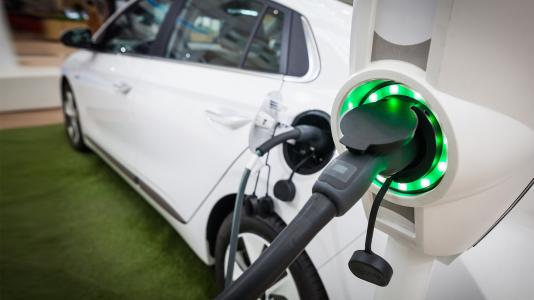
As the nation’s leading institutions for scientific innovation in the United States, national laboratories such as Argonne address large-scale, complex research and development challenges with a multidisciplinary approach that places an emphasis on translating science to innovation.
Still, the road from scientific discovery to market application is challenging to navigate. Connecting researchers to potential markets and funding promising technologies to move beyond the laboratory has always been one of the biggest hurdles of transferring technology to potential industrial partners.
U.S. companies are eager to access the benefits of research innovation in areas such as manufacturing, energy and materials, and the U.S. Department of Energy (DOE) now offers multiple programs to help companies gain access to those benefits, through cost-shared awards that help industry work with national laboratory researchers to explore the transfer of promising technologies to the marketplace.
Argonne and DOE recently announced multiple efforts funded through two such award programs to connect lab researchers with industrial partners in order to commercialize DOE-funded technologies.
Technology Commercialization Fund Awards
DOE’s Technology Commercialization Fund (TCF), managed by DOE’s Office of Technology Transitions, matches companies with national laboratories, enabling the parties to work together to mature energy technologies with the potential for high impact. Argonne National Laboratory received $4.3 million from the TCF; the private partners match funds supplied by DOE.
Nine out of the 12 Argonne projects funded relate to energy, manufacturing and transportation. They include projects for:
- Development of a new class of reusable and highly specific adsorbents for biofuels using low-cost materials, processing and sequential infiltration synthesis.
- Development of a software-defined submeter system targeted for building and electric vehicle charging applications.
- Continued development of an adapter for smart electric vehicle charging to improve vehicle grid integration and interoperability.
- Stabilization of high-energy lithium-ion cathodes using nanocomposite coatings.
- Development of user-friendly, commercial, machine learning-based software for large-scale simulations and real-time 3-D analysis and visualization.
- Integration of thermal energy storage with a combined heat and power (CHP) system.
- Application of machine learning workflow tools for rapid optimization of product designs and manufacturing processes to reduce design time from months to days.
- Enhancing ultimate recoveries of unconventional oil reservoirs with in-situ nano-catalysts.
- Production of novel composite material production at low temperatures for energy applications.
High-Performance Computing for Manufacturing Awards
The High-Performance Computing for Manufacturing (HPC4Mfg) program, operated by DOE’s Advanced Manufacturing Office within the Office of Energy Efficiency and Renewable Energy (EERE), leverages world-class technical expertise with high-performance computing to tackle manufacturing challenges uniquely solved by computer modeling. Selected industry partners work with scientists in Argonne’s research divisions and at the Argonne Leadership Computing Facility (ALCF), a national scientific user facility that provides supercomputing resources and expertise to the scientific and engineering community. ALCF computing resources are 10 to 100 times more powerful than systems typically used for scientific research and are available to researchers from universities, industry, and government agencies.
Each project will receive up to $300,000. Some projects are also co-funded with other DOE offices. Each participating private entity or consortium was required to contribute at least $60,000 of in-kind funds. Argonne projects receiving HPC4Mfg funding for winter 2018 include:
- Optimizing gas turbine combustors through a partnership with Lawrence Livermore National Laboratory.
- Optimizing reheat furnace efficiency in steel manufacturing.
- Optimizing the characteristics of non-equilibrium plasmas for more efficient and cleaner internal combustion engines. This project is co-funded by the Vehicle Technologies Office and the Advanced Manufacturing Office.
- Optimizing the fiber spinning manufacturing process used in filters, fabrics and insulation.
According to U.S. Secretary of Energy Rick Perry, “The Department of Energy is one of the largest supporters of technology transfer within the federal government. By connecting innovators at our national labs with entrepreneurs in the private sector, DOE is breaking down barriers and finding the nexus between ingenuity and opportunity.”
- More information about Argonne’s TCF awards
- More information about Argonne’s HPC4Mfg awards
EERE’s Advanced Manufacturing Office (AMO) supports early-stage research to advance innovation in U.S. manufacturing and promote American economic growth and energy security.
The U.S. Department of Energy’s Office of Energy Efficiency and Renewable Energy (EERE) supports early-stage research and development of energy efficiency and renewable energy technologies that make energy more affordable and strengthen the reliability, resilience, and security of the U.S. electric grid.